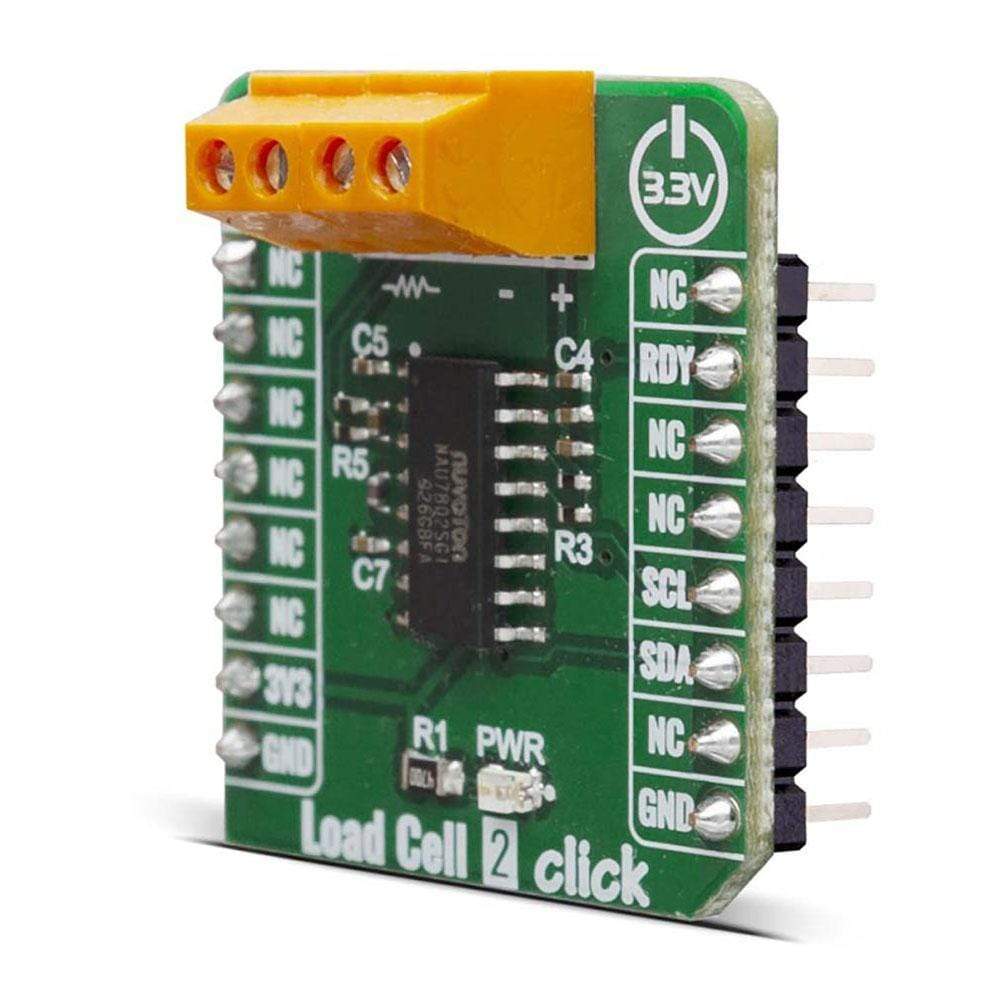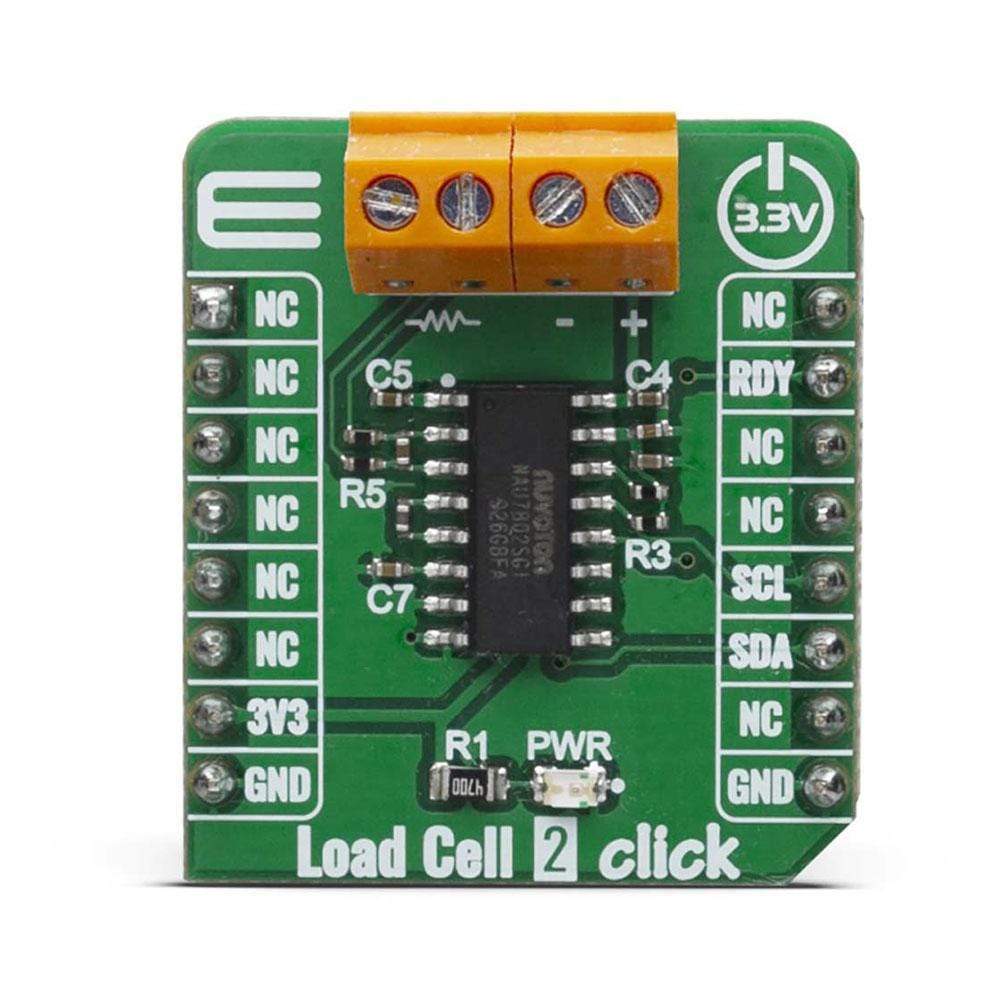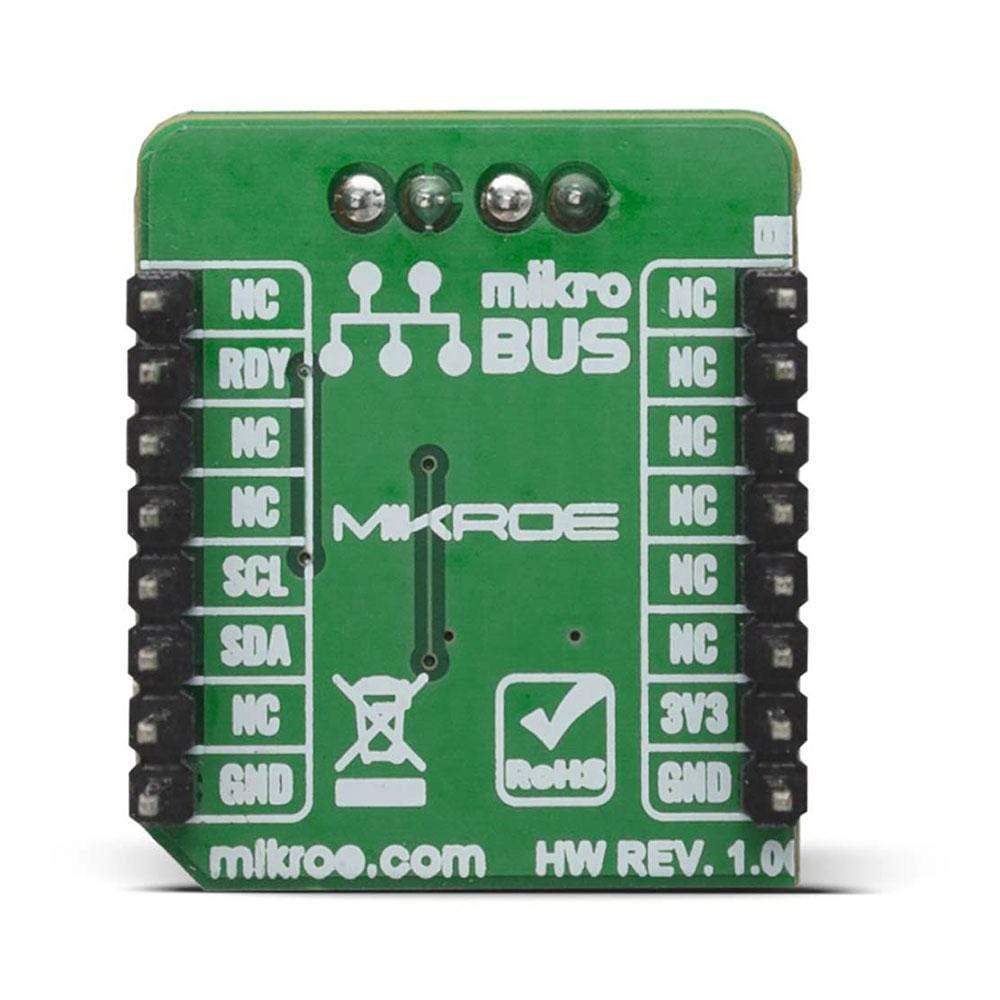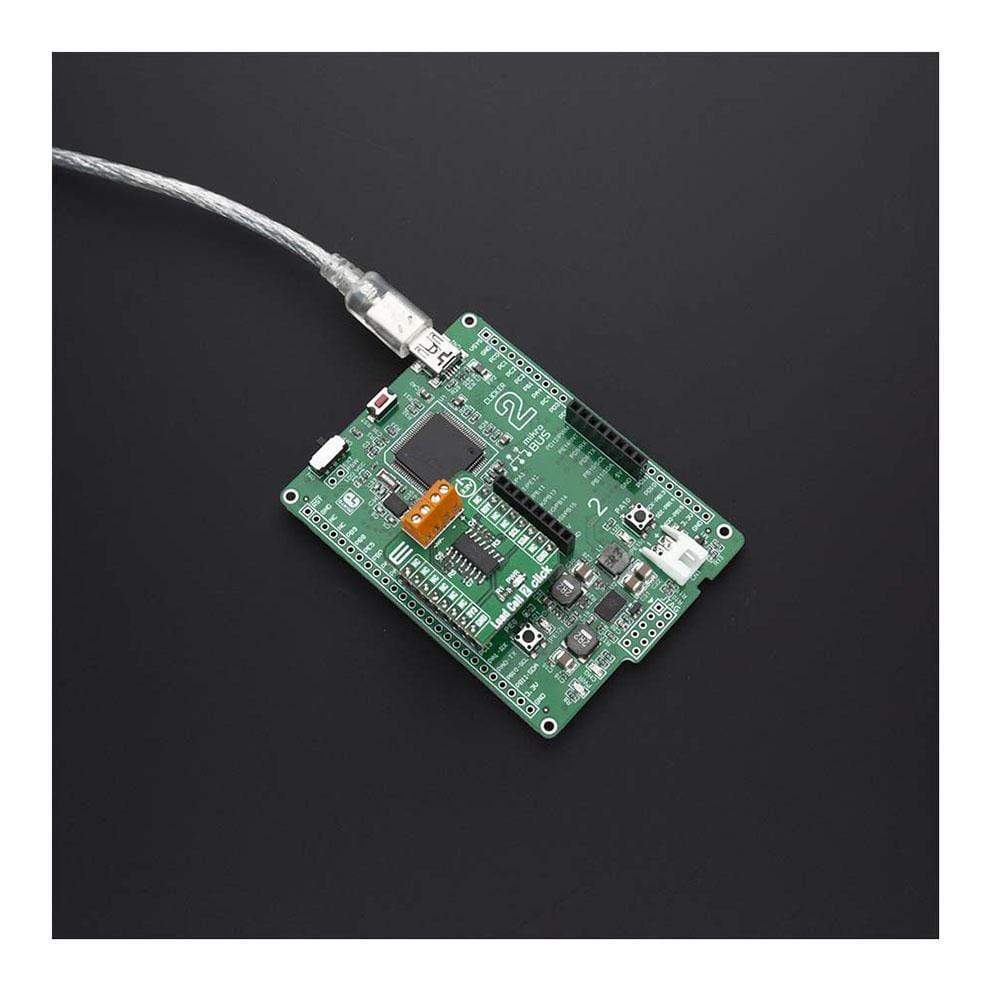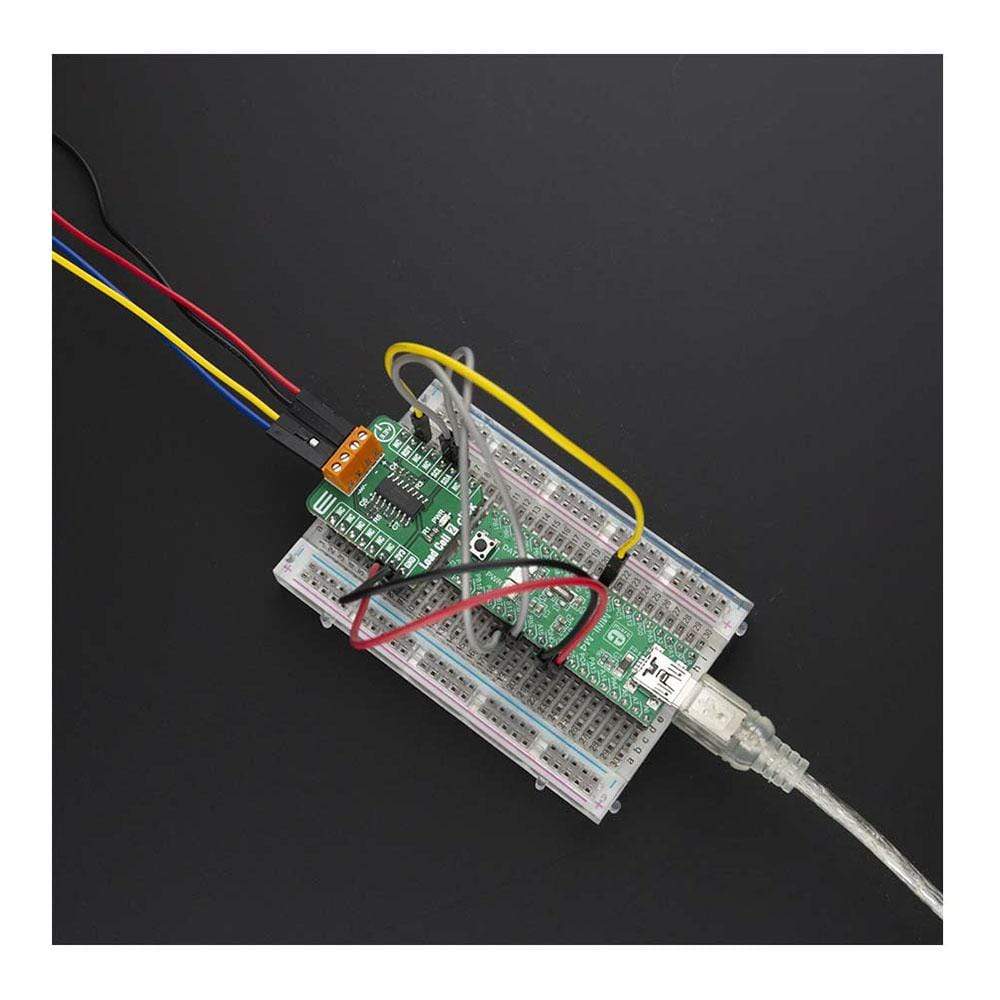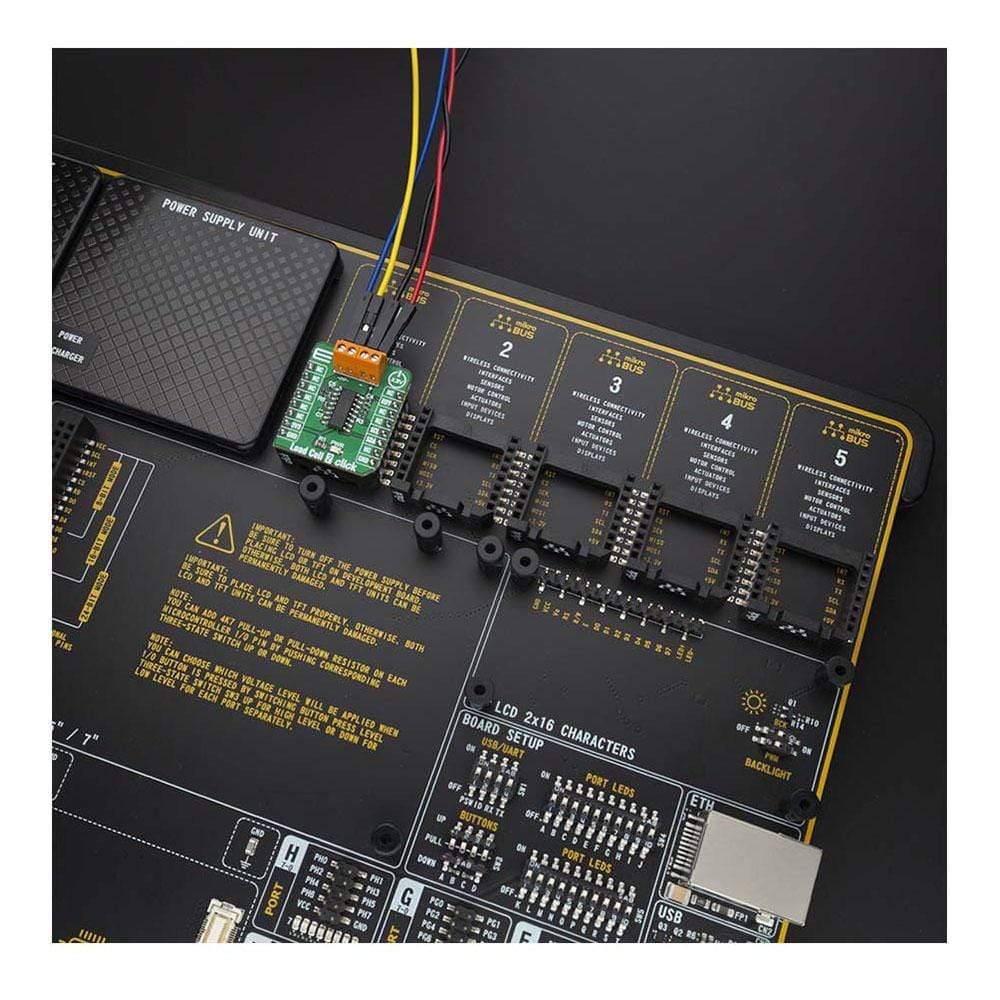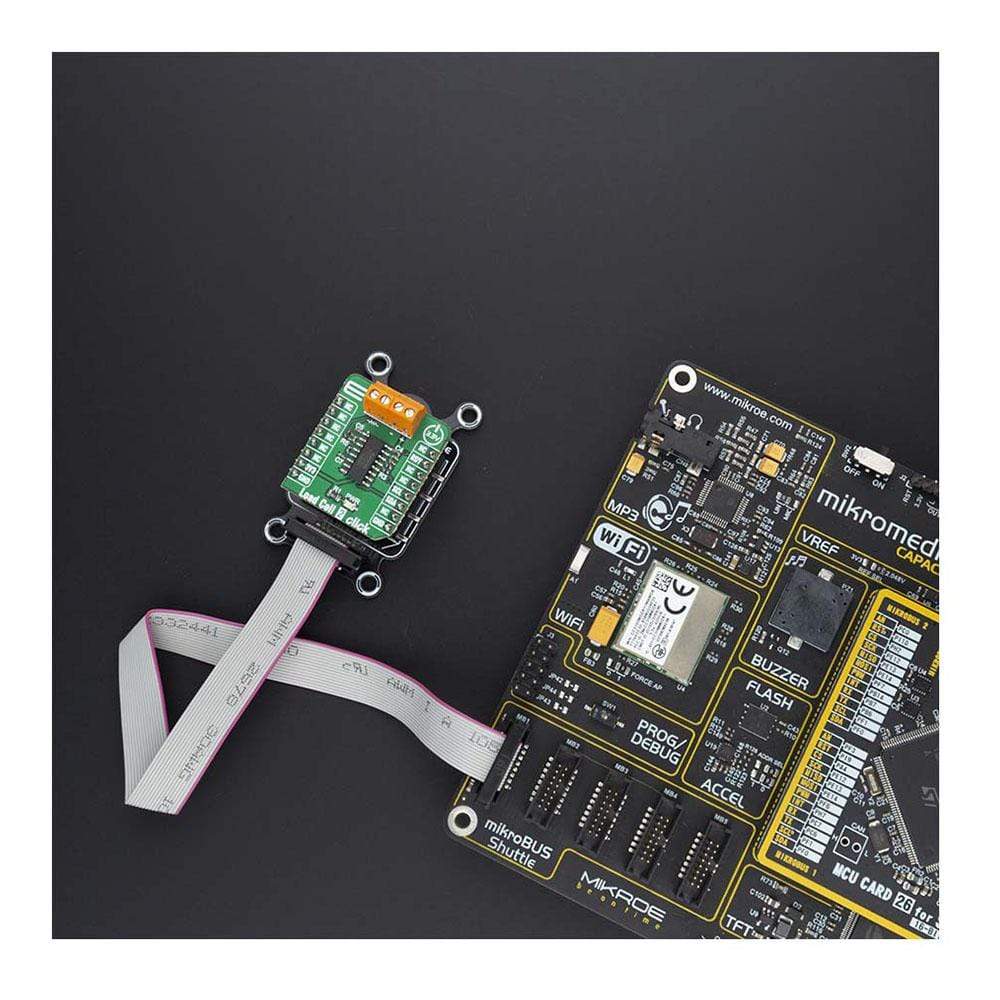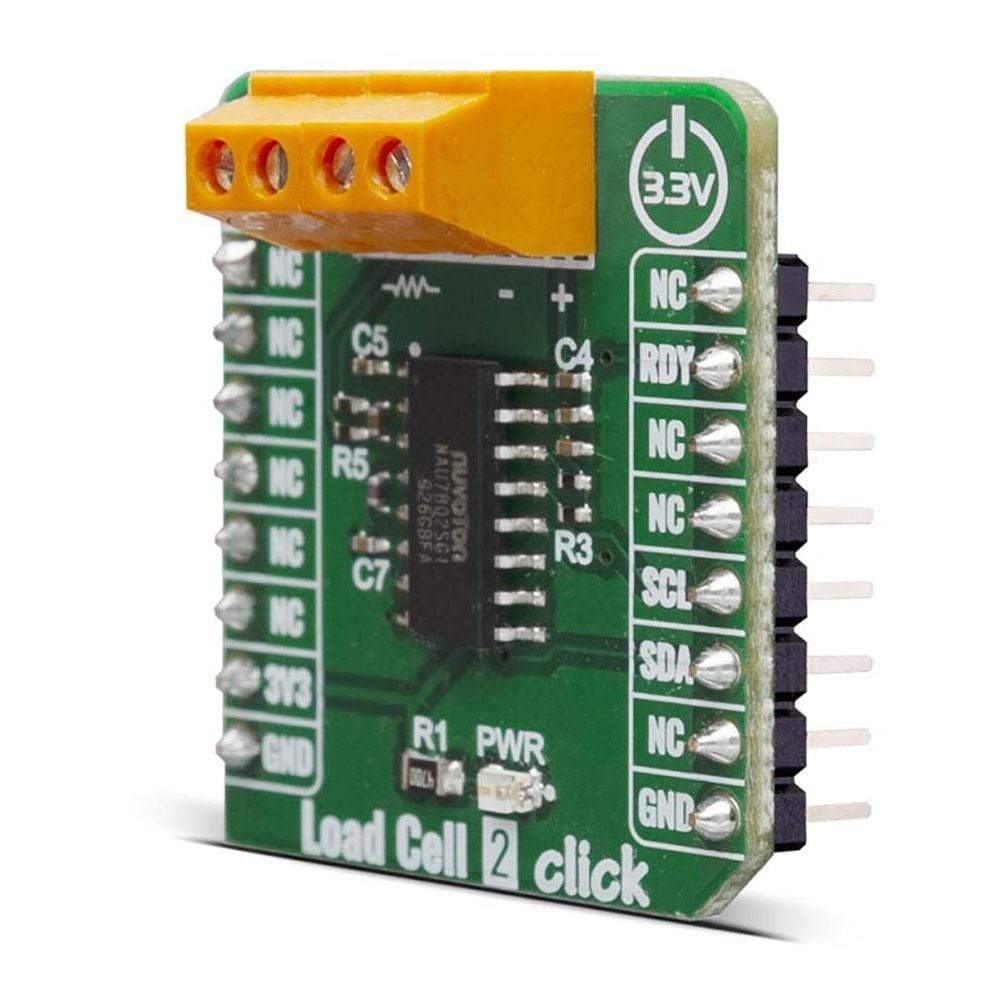
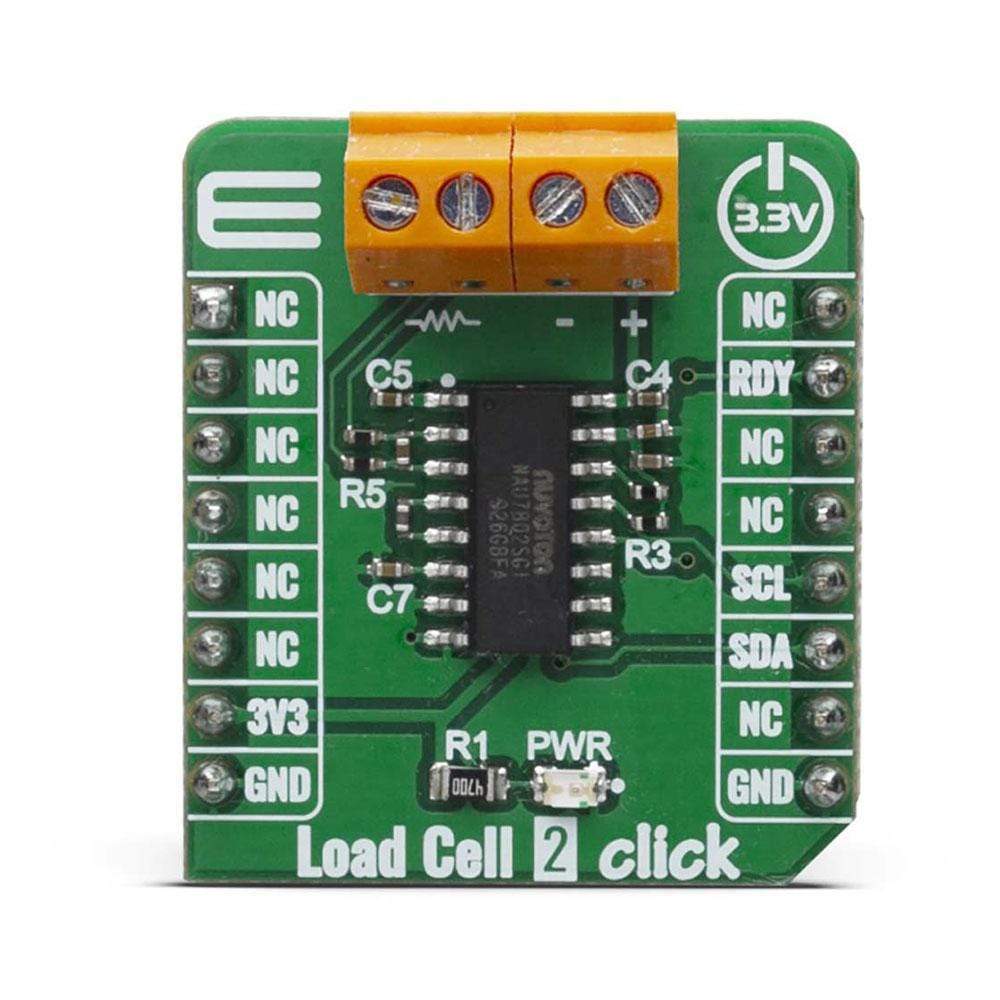
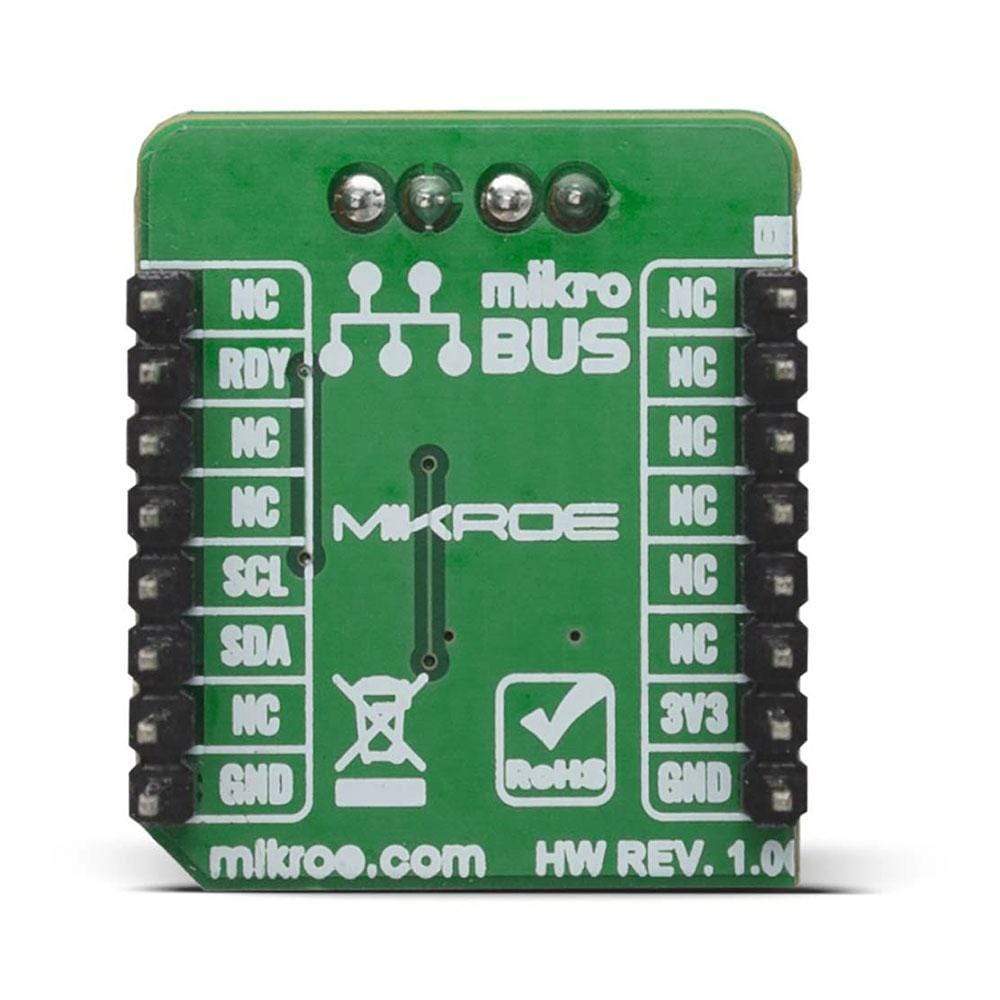

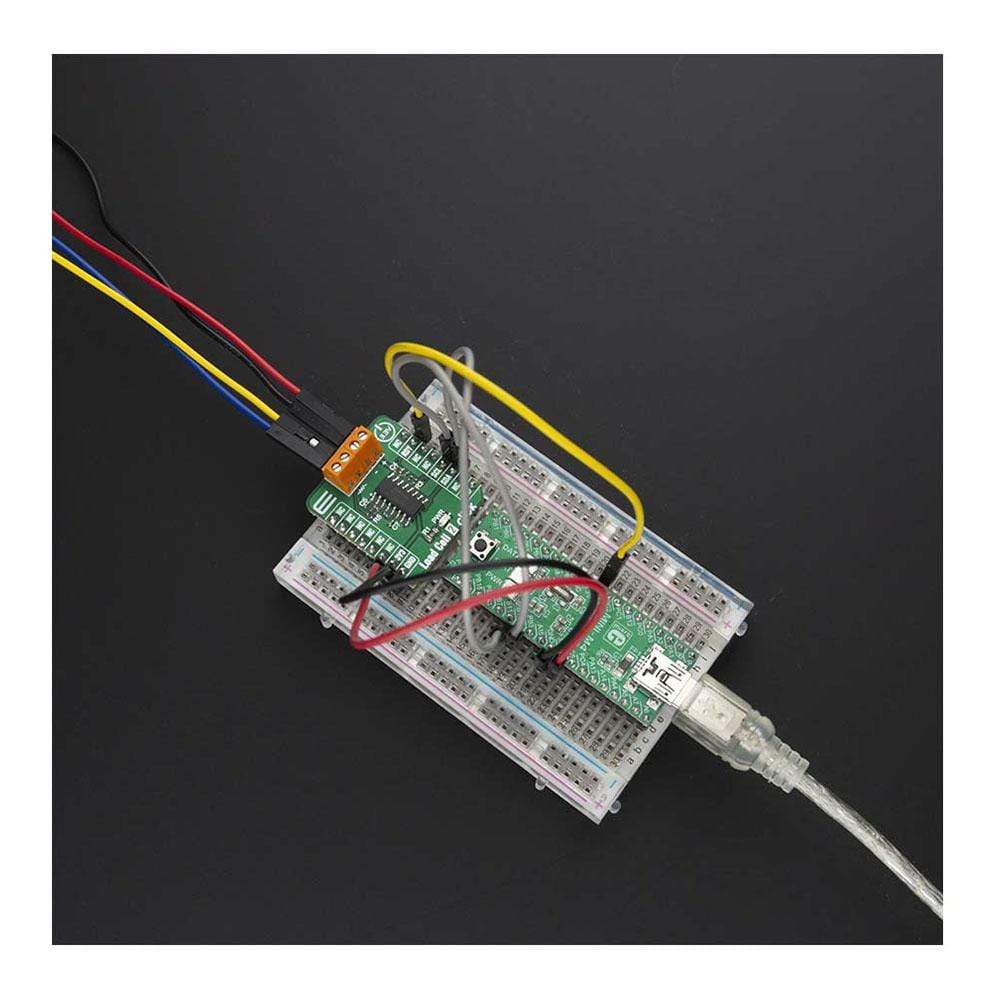
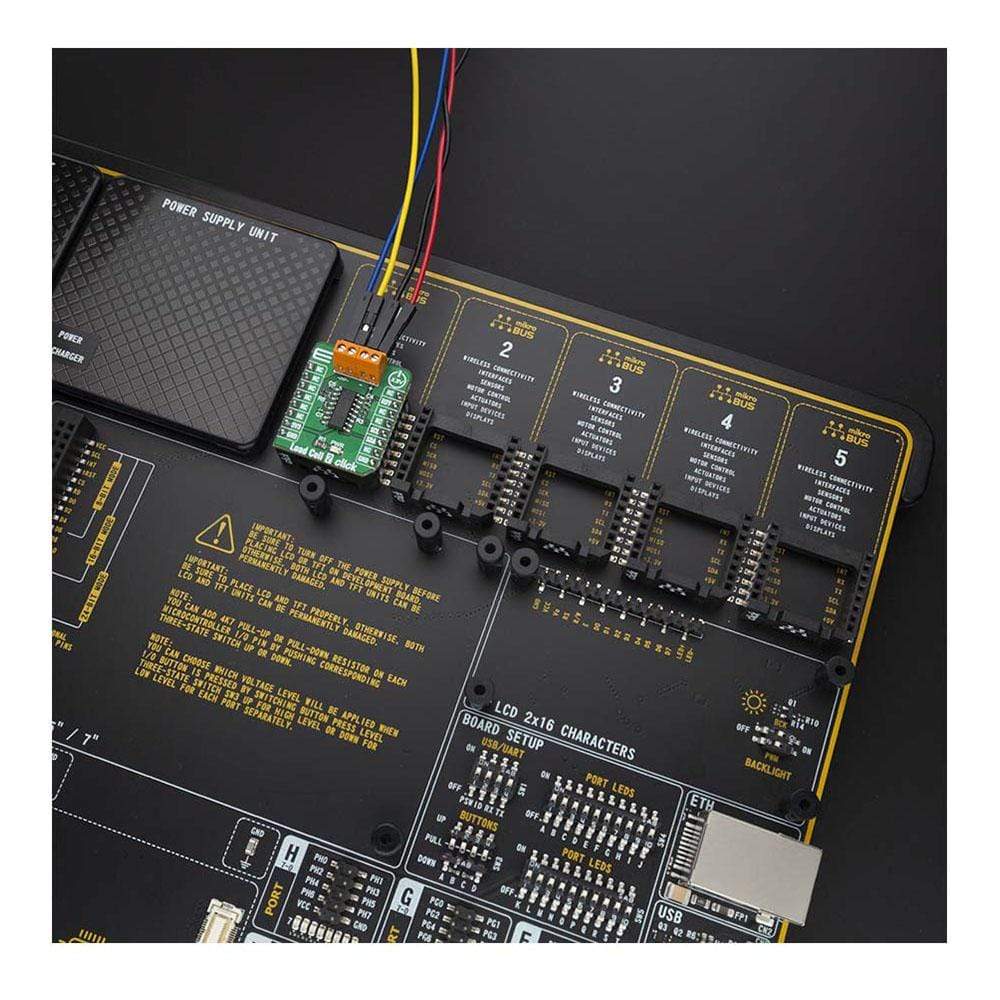
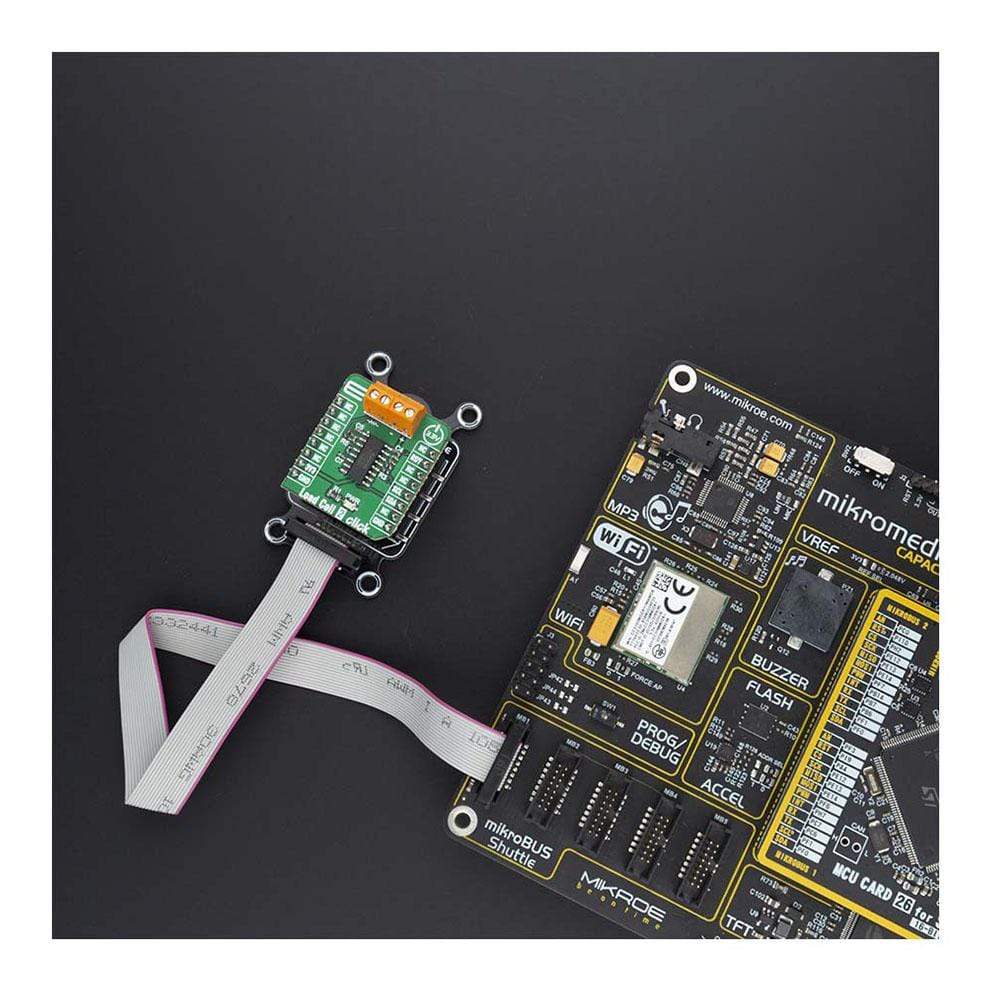
Overview
The Load Cell 2 Click Board™ is a weight measurement click that utilizes a load cell element, in order to precisely measure the weight of an object. The Load Cell 2 Click can be used with the strain gauge type of load cells with external differential reference voltage range from 0.1V to 5V. The strain gauge load cell is typically a circuit made of four strain gauges, connected in the Wheatstone bridge configuration. Very small voltage changes need to be accurately detected and converted into a digital form. The Load Cell 2 Click is based around the NAU7802, which is a 24-bit analog-to-digital converter, operated via a simple I2C command, from Nuvoton. This sensor has many features that make it a perfect solution for small designs. One of these features is certainly its high level of integration that allows a minimal number of external components.
The Load Cell 2 Click Board™ is supported by a mikroSDK compliant library, which includes functions that simplify software development. This Click Board™ comes as a fully tested product, ready to be used on a system equipped with the mikroBUS™ socket.
Downloads
Das Load Cell 2 Click Board™ ist ein Gewichtsmess-Click, der ein Wägezellenelement verwendet, um das Gewicht eines Objekts präzise zu messen. Das Load Cell 2 Click kann mit Wägezellen vom Typ Dehnungsmessstreifen mit einem externen Differenzial-Referenzspannungsbereich von 0,1 V bis 5 V verwendet werden. Die Wägezelle mit Dehnungsmessstreifen ist typischerweise ein Schaltkreis aus vier Dehnungsmessstreifen, die in der Wheatstone-Brückenkonfiguration verbunden sind. Sehr kleine Spannungsänderungen müssen präzise erkannt und in eine digitale Form umgewandelt werden. Das Load Cell 2 Click basiert auf dem NAU7802, einem 24-Bit-Analog-Digital-Wandler von Nuvoton, der über einen einfachen I2C-Befehl gesteuert wird. Dieser Sensor hat viele Funktionen, die ihn zu einer perfekten Lösung für kleine Designs machen. Eine dieser Funktionen ist sicherlich sein hoher Integrationsgrad, der eine minimale Anzahl externer Komponenten ermöglicht.
Das Load Cell 2 Click Board™ wird von einer mikroSDK-kompatiblen Bibliothek unterstützt, die Funktionen enthält, die die Softwareentwicklung vereinfachen. Dieses Click Board™ wird als vollständig getestetes Produkt geliefert und ist bereit für den Einsatz auf einem System, das mit der mikroBUS™-Buchse ausgestattet ist.
| General Information | |
|---|---|
Part Number (SKU) |
MIKROE-4047
|
Manufacturer |
|
| Physical and Mechanical | |
Weight |
0.018 kg
|
| Other | |
Country of Origin |
|
HS Code Customs Tariff code
|
|
EAN |
8606018717118
|
Warranty |
|
Frequently Asked Questions
Have a Question?
Be the first to ask a question about this.

